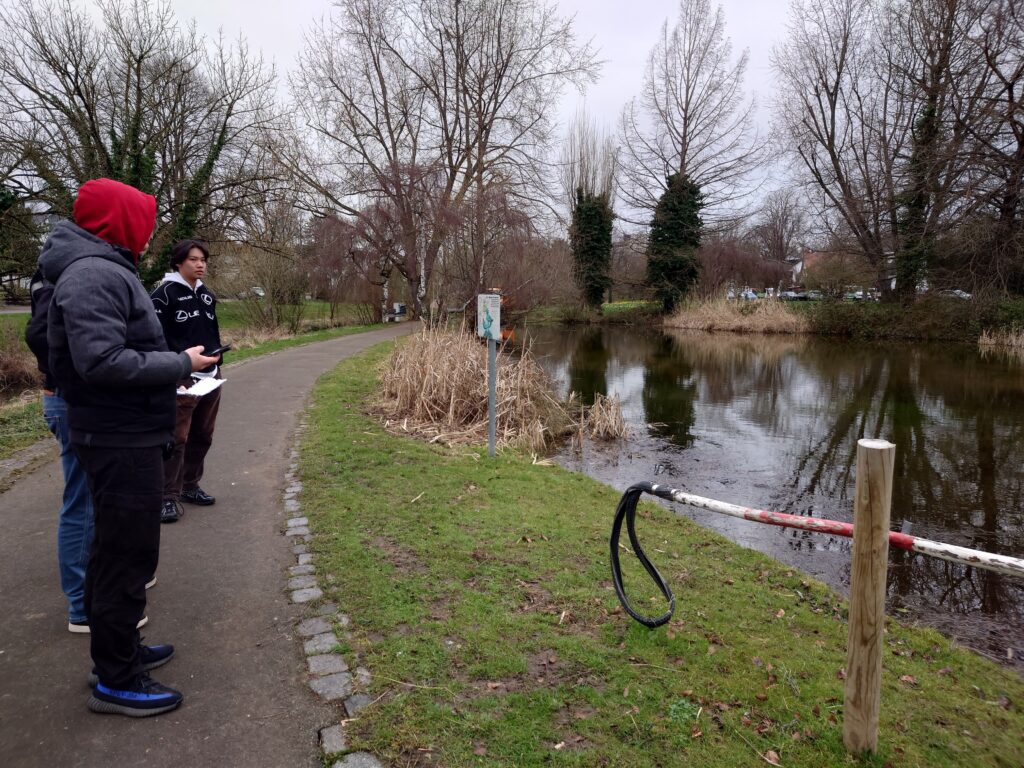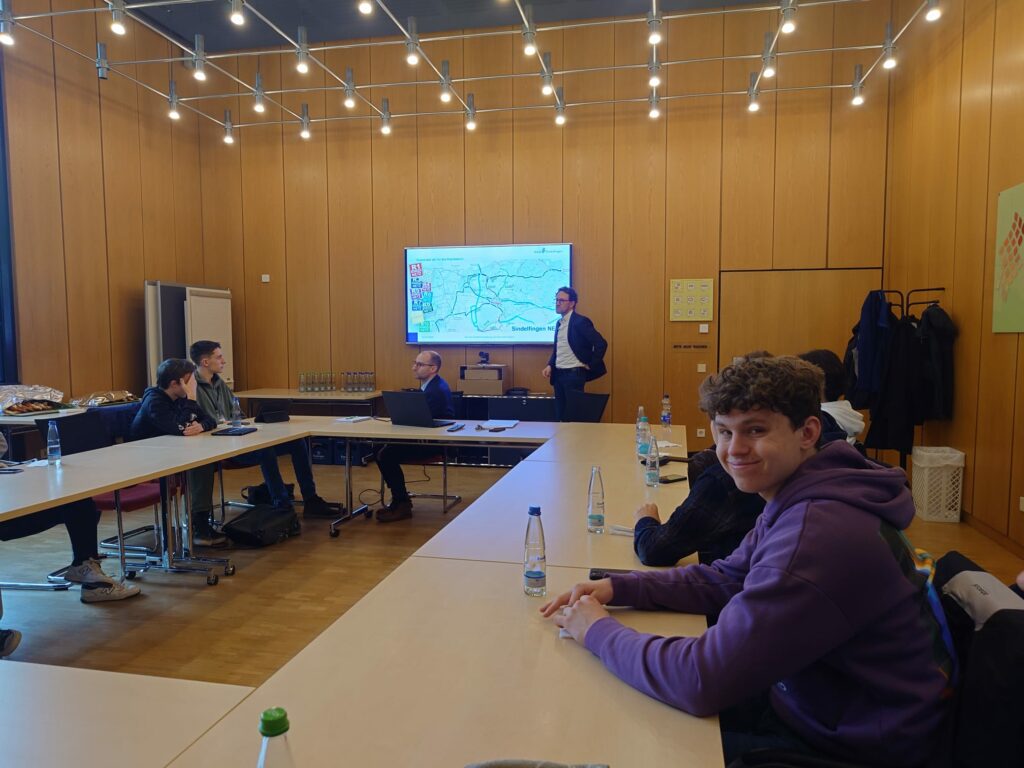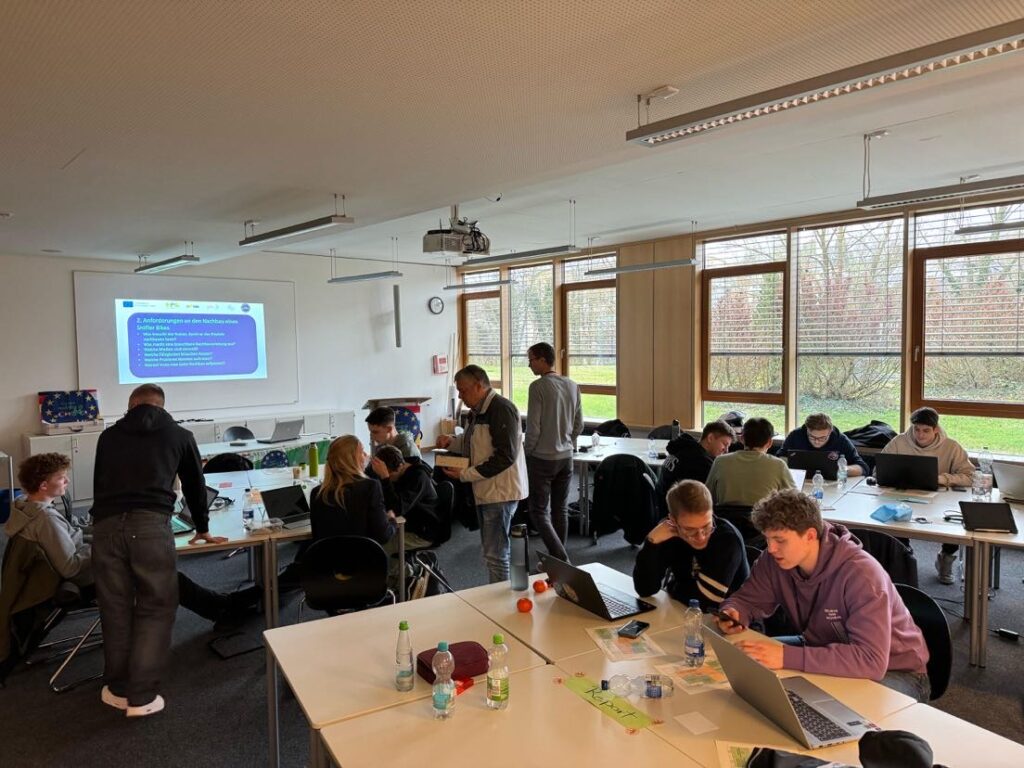Second day
Explanation of the day:
In the morning, we excitedly planned a city rally through Sindelfingen using the same app as the day before. After scanning the QR code to start our adventure, we explored the city’s streets and landmarks, completing challenges along the way. Later, we gathered at the town hall for engaging discussions with important individuals from the community, deepening our appreciation for Sindelfingen’s culture and heritage.
Following a brief overview of the day’s itinerary, our groups set out to explore Sindelfingen and assess its bike-friendliness. Employing the “Biparcours” app once more, we embarked on our journey, tasked with answering questions and capturing snapshots along the way. Our focus remained on identifying bike lanes and suitable parking spots throughout the city.
City development meeting Townhall
After the rally, we had a meeting with representatives from the city government. Initially, they presented their proposed changes, followed by a Q&A session. Then, some of the German participants presented our project, and we engaged in collaboration. Following this, it was time for lunch.
Workshop: Snifferbike Prototypes
In the workshop, we got to see the first versions of the snifferbike prototypes. Each person who presented gave us a detailed look at what they’ve been working on. They talked about things like what kinds of sensors they used, what little computer brain runs the show, and how they put it all together.
One interesting thing was how different schools used different programming languages. But everyone shared how they made their sensors work together and dealt with problems like how to organize the software and data.
There were three big topics that came up a lot during the presentations. People talked about how strong their prototypes were built, what they looked like, and how they planned to make more of them. They also talked about problems they expected to run into, like the GPS antenna breaking, and how they were going to fix them, like making antennas easy to replace.
The best part of the workshop was how everyone worked together. Each school was at a different stage, so we all learned from each other. People who knew a lot about sensors got to see how the whole thing comes together, and people who aren’t so technical got a better idea of how the product is made. It was a real team effort!




